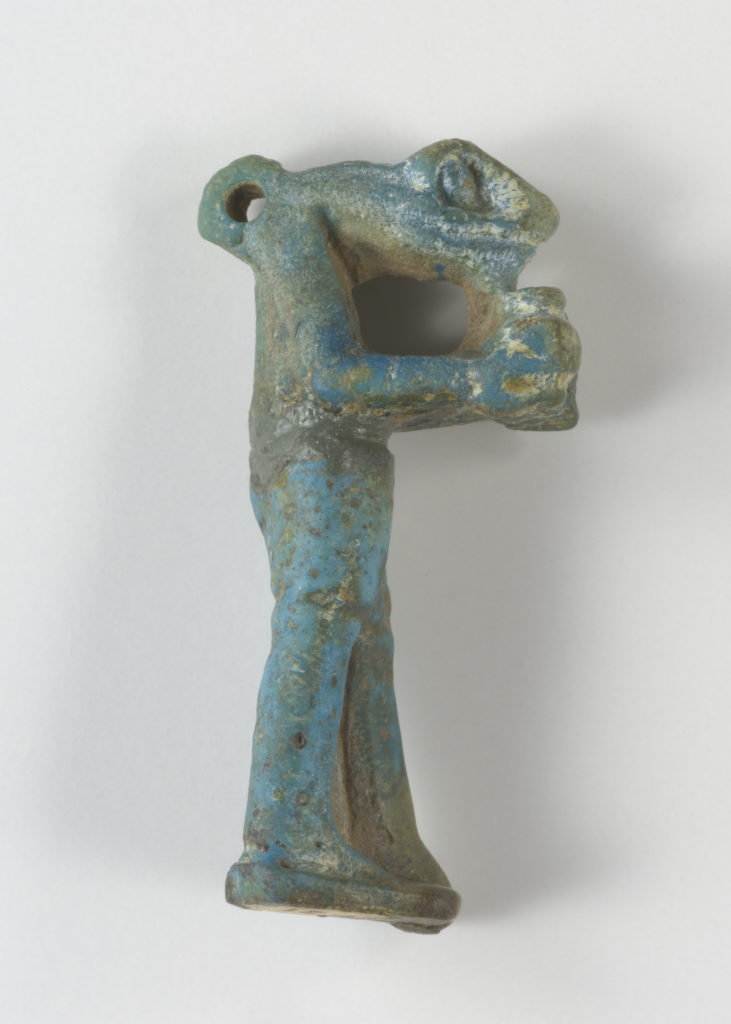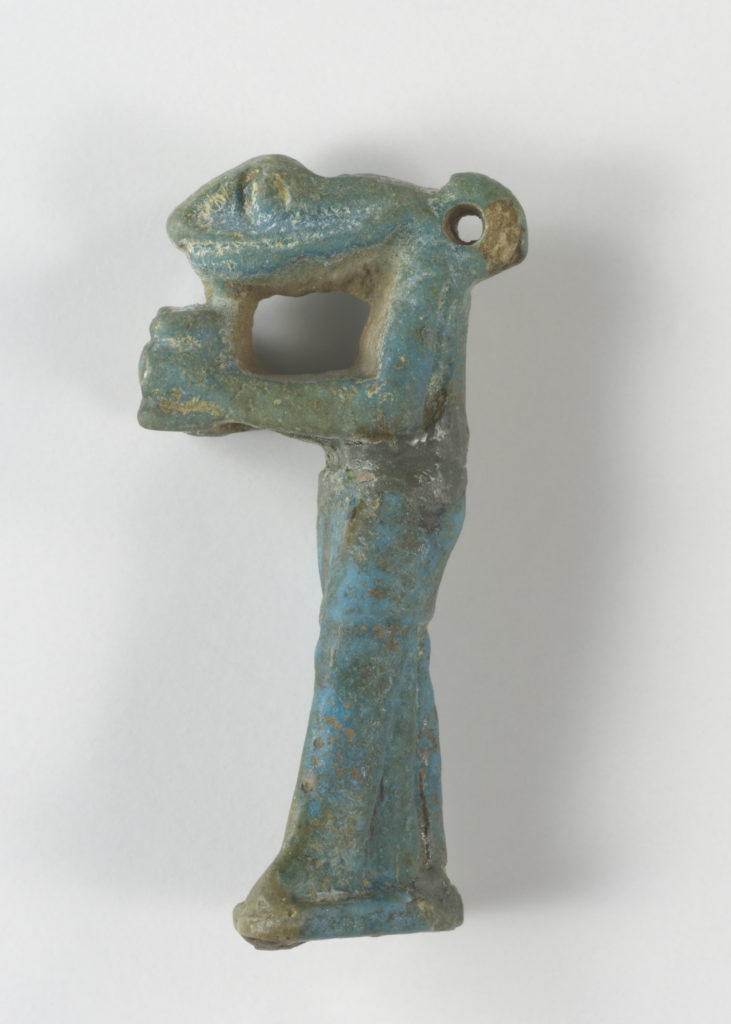Amulet of Nehebkau (work of art)
Información sobre la obra de arte
Acerca de
Ideas clave sobre esta obra de arte
- This amulet represents the ancient Egyptian snake god known as Nehebkau (ne-heb-kow). An amulet is an object believed to have magical properties that protect the person who wears it. This amulet was most likely worn as a pendant on a necklace.
- Ancient Egyptians believed that Nehebkau could not be harmed by magic, fire, or water. His power made Nehebkau amulets popular because they were thought to offer the wearer protection in their lives and on their journey to the underworld.
- Nehebkau was often depicted in one of two forms: as a snake-headed man with a snake tail or in full snake form with human legs, holding a nu vessel (a round jar containing a beverage for offerings) in front of him.
- Amulet of Nehebkau is made from dark blue-green faience (fay-yahns). Faience is a human-made material that was often used in ancient Egypt to create figurines, vessels, jewelry, ritual objects, and architectural ornaments.
Más información
In many ancient cultures, people wore personal accessories that they believed to have magical properties. This amulet was worn as a piece of jewelry to protect the wearer from danger. Ancient Egyptians wore amulets in daily life to promote their health and wealth. Amulets were also placed inside the mummy wrappings of the deceased as a form of protection. People in ancient Egypt made amulets using different types of materials. Amulet of Nehebkau is made with faience, a glazed ceramic material. Faience was created using a technique called self-glazing that involved salts (in a wet paste of ground quartz and sand) rising to the surface when the paste was fired in the kiln. It resulted in a shiny finish of bright turquoise, blue, and green. Ancient Egyptians favored faience especially for ritual objects (objects for religious and ceremonial purposes) because the glossary surface was considered to be infused with the power of the sun and rebirth.
This amulet represents the Greek snake god Nehebkau and symbolizes power. Ancient Egyptians recognized the dual nature of animals. Snakes, for example, are scary but also powerful. The snake god was feared by many because he is one of the “42 judges of the dead.” This means that he could decide whether or not a person gets to have a peaceful afterlife. He also took care of the deceased by making offerings on their behalf. Nehebkau’s name means “he who nourishes the ka(s),” or Egyptian souls. He is represented on this amulet with a snake head on a human body. He holds a nu vessel (a round jar containing a beverage) for the ka (lifeforce of the deceased), and he is depicted wearing a shendyt (a kilt-like garment worn around the waist). The loop attached to the back of the amulet suggests that it was worn as a pendant, most likely attached to twisted and knotted strings.
Nehebkau was believed to have powers that protected him from magic, fire, and water. These qualities made sculpted pendants like Amulet of Nehebkau popular symbols of protection for people in ancient Egypt.
Recursos adicionales
Recursos para los profesores:
- Read an article about ancient Egyptian amulets.
- Read an article about sacred animals in ancient Egypt.
- Read an article about Egyptian faience.
Recursos para los estudiantes:
- Explore a webpage to discover how ancient Egyptians viewed snakes.
- Listen to curator Caroline Rocheleau give an overview of Egyptian faience.
- Watch a video to learn more about faience and see how it is made.
- Read a short article about the ways ancient Egyptians prepared for death.


